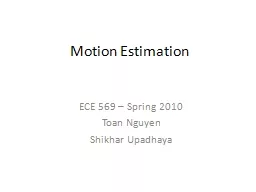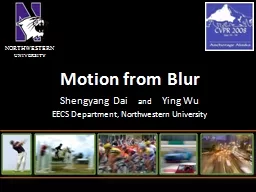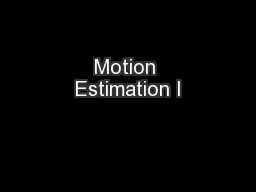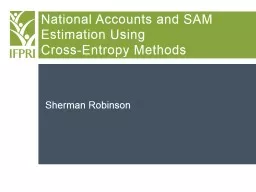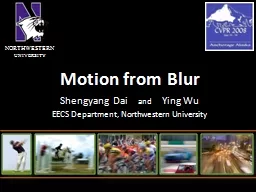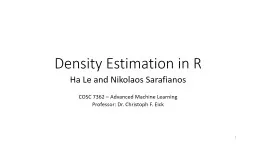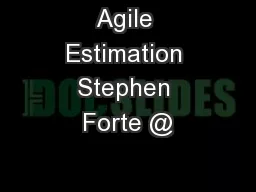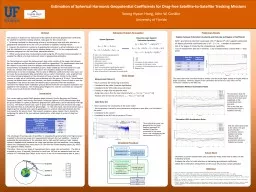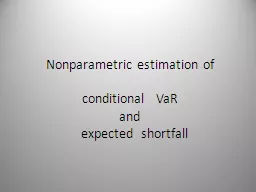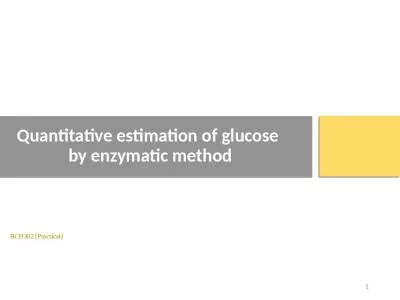PPT-Motion Estimation
Author : ellena-manuel | Published Date : 2017-05-02
ECE 569 Spring 2010 Toan Nguyen Shikhar Upadhaya Outline What is new with motion estimation Four Step Search and Hexagon Search Algorithms Parallelization strategies
Presentation Embed Code
Download Presentation
Download Presentation The PPT/PDF document "Motion Estimation" is the property of its rightful owner. Permission is granted to download and print the materials on this website for personal, non-commercial use only, and to display it on your personal computer provided you do not modify the materials and that you retain all copyright notices contained in the materials. By downloading content from our website, you accept the terms of this agreement.
Motion Estimation: Transcript
Download Rules Of Document
"Motion Estimation"The content belongs to its owner. You may download and print it for personal use, without modification, and keep all copyright notices. By downloading, you agree to these terms.
Related Documents

